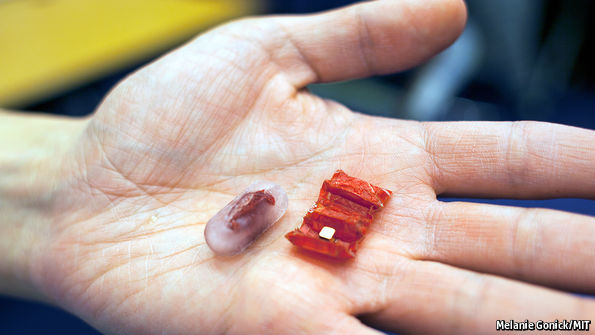The fantastic voyage
 Ice and an origami slice
Ice and an origami sliceROBOTIC surgery is one thing, but sending a robot inside the body to carry out an operation quite another. It has long been a goal of some researchers to produce tiny robotic devices which are capable of travelling through the body to deliver drugs or to make repairs without the need for a single incision. That possibility has just got a bit closer.
In a presentation this week to the International Conference on Robotics and Automation in Stockholm, Daniela Rus and Shuhei Miyashita of the Massachusetts Institute of Technology described a robot they have developed that can be swallowed and used to collect dangerous objects ingested accidentally. The device is based on foldable robot technology that their team of researchers have been working on for years. The basic idea is to make robots that fold up, a bit like origami, into small structures less than a few millimetres in diameter so that they can be swallowed like tablets. Then, once inside the body, the capsules enclosing the robots dissolve, allowing the devices to unfold, reconfigure themselves and get to work.
To test their latest…Continue reading
Source: Economist






